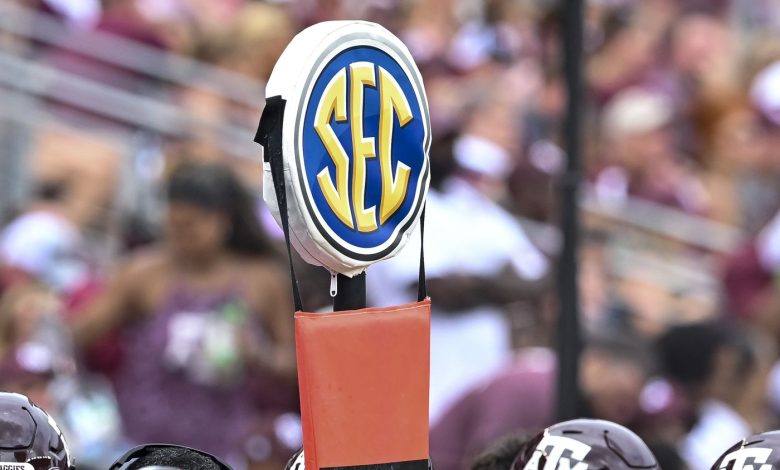Texas athletics surpassed SEC programs in revenue, owing to football.

In the world of collegiate athletics, few programs garner as much attention or financial power as those from the Southeastern Conference (SEC) and the University of Texas. Known for its rich history, cultural significance, and significant television exposure, the University of Texas (UT) has long been a dominant force in college sports, particularly football. However, in recent years, the Texas Longhorns’ athletic program has made waves not only for its athletic success but also for its impressive financial clout. According to reports, Texas Athletics has now surpassed SEC programs in terms of revenue generation, thanks in large part to football’s outsized influence in the university’s financial ecosystem.
This significant achievement has raised eyebrows across the nation, especially since the SEC has long been regarded as the gold standard for revenue generation in college sports. What does this mean for Texas? What role has football played in this financial success? And how might this shift affect the competitive landscape of college sports in the coming years?
The University of Texas is no stranger to financial success in the world of college sports. Over the past few decades, the Longhorns have consistently ranked among the top athletic programs in the nation, both on and off the field. With a large and dedicated fanbase, a massive stadium (Darrell K Royal–Texas Memorial Stadium), and a long tradition of success in football, Texas has built a financial engine that can rival nearly any other program in the country.
In 2023, the University of Texas reported a total athletic revenue that eclipsed $240 million, an amount that places it among the top schools in the nation. This sum includes revenue from football, basketball, and other sports, but it is primarily driven by football. The sheer scale of Texas’ athletic department’s revenue is indicative of the immense popularity and profitability of college football.
But Texas is now outpacing even some of the most storied football programs in the SEC, an impressive feat considering the SEC’s dominant presence in college football. Historically, SEC schools like Alabama, Georgia, and LSU have been considered the top earners in college sports, consistently bringing in massive amounts of revenue thanks to their football programs. However, Texas’ numbers now put it ahead of many of these schools, showing that the power of football, along with other factors like television contracts, fan engagement, and strategic investments, is helping Texas stand out on the financial front.
At the core of Texas’ remarkable revenue generation is its football program, which is one of the most financially successful in the country. Football is not just another sport at Texas—it’s a cultural and economic powerhouse. The Longhorns’ football program is one of the few in the nation capable of consistently drawing sellout crowds to games, year after year. The historic Darrell K Royal–Texas Memorial Stadium, which seats over 100,000 fans, serves as a focal point for the program’s success. The stadium’s vast capacity allows for significant ticket sales, and with a packed house, each home game represents a major financial boon for the university’s athletic department.
Beyond ticket sales, Texas has also excelled at capitalizing on other streams of revenue. The university’s media rights deal has played a crucial role in its financial dominance. Texas, along with other Power Five schools, signed multi-million-dollar deals with major broadcasters, including ESPN and Fox Sports. These lucrative television contracts ensure that Texas football games are broadcast to millions of viewers across the country, further enhancing the program’s ability to generate income from advertising, sponsorships, and partnerships.
The Longhorn Network (LHN), a collaboration between the University of Texas and ESPN, is another key driver of revenue. This 24/7 network, which airs content related to Texas athletics, provides a continuous stream of programming that highlights the school’s football program, among other sports. LHN serves as a highly profitable venture for Texas, contributing significantly to its athletic revenue.
Texas football has a rich tradition dating back to the early 20th century. The program boasts four national championships and numerous conference titles. This historical success has helped Texas maintain its reputation as one of the premier programs in college football. Even during lean years when the Longhorns were not consistently contending for national championships, the fanbase remained loyal, which in turn helped sustain the financial health of the program.
The success of Texas football has translated into a massive merchandising business. Texas’ distinctive burnt orange color and iconic Longhorn logo are instantly recognizable, making the school’s merchandise highly sought after. Jerseys, hats, T-shirts, and other apparel adorned with the Longhorn logo fly off the shelves, adding to the bottom line of Texas Athletics. The university has also made substantial investments in enhancing its facilities, including the recently upgraded football training complex, which further strengthens its brand and attracts top-tier recruits.
Texas has also demonstrated a remarkable ability to land lucrative sponsorships. The school’s long-standing relationships with major companies such as Nike and Coca-Cola, as well as local businesses, generate additional revenue. Corporate partnerships are crucial for Texas, as they help cover operational expenses and contribute to the long-term growth of the program.
The Southeastern Conference, or SEC, is widely regarded as the powerhouse of college football, and its member schools have long been the standard-bearers for athletic revenue. The SEC is home to some of the most successful football programs in history, including Alabama, Georgia, LSU, and Auburn. These schools have become synonymous with college football excellence and, as a result, have been able to generate enormous financial returns.
The SEC’s dominance in revenue generation can be attributed to several factors. First and foremost, the conference’s football programs have a longstanding tradition of success. Schools like Alabama and Georgia consistently field top-tier teams that draw enormous crowds to their games, while the SEC’s reputation for producing high-quality football talent increases the appeal of its programs to both fans and advertisers alike.
In addition to on-field success, the SEC has made significant strides in terms of media rights. The conference’s partnership with ESPN, which includes the SEC Network, has proven to be highly lucrative. The SEC’s deal with ESPN has resulted in an influx of revenue from television rights, which benefits member schools significantly. The SEC also capitalizes on its vast fanbase and the popularity of its football programs through sponsorships and merchandising.
However, despite its long-standing financial dominance, the SEC is now facing increasing competition from other conferences like the Big 12 and Big Ten. Texas’ rise in athletic revenue is a testament to how other programs can leverage their financial assets to become more competitive on the national stage.
The situation becomes even more intriguing as Texas prepares to join the SEC, slated for the 2024 season. With the Big 12 now in the rearview mirror, Texas is aligning itself with the most financially potent conference in college sports. This move will only bolster the Longhorns’ revenue streams by offering new opportunities for television deals, sponsorships, and exposure. Texas’ presence in the SEC is expected to draw significant attention, both for its financial heft and its potential to become a dominant force within the conference.
For the SEC, adding a powerhouse like Texas (along with Oklahoma) is a significant coup. While the move may shake up the conference’s traditional dynamics, it also enhances the SEC’s position as the undisputed leader in college sports revenue. The SEC’s future television contracts will likely see a windfall due to the addition of Texas and Oklahoma, and schools within the conference are expected to see increased revenue sharing.
For Texas, joining the SEC will create a unique set of challenges, but it also presents an opportunity to solidify its place as one of the premier athletic programs in the nation. The financial implications of this move could be enormous, as Texas will now have access to the SEC’s massive television deals and sponsorship opportunities.
Texas Athletics has emerged as a formidable financial force in collegiate sports, thanks to the profitability of its football program. Its ability to generate massive revenue, surpassing even some of the top SEC programs, demonstrates the immense power of the Longhorns’ athletic department. Football, with its rich history, massive fanbase, and ability to generate revenue through television contracts, ticket sales, and sponsorships, has played a pivotal role in Texas’ financial ascent.
As Texas joins the SEC in 2024, the implications for the landscape of college athletics are profound. The Longhorns’ financial prowess, combined with their historical success and high-profile move to the SEC, will continue to impact both the competitive balance of college sports and the business side of collegiate athletics for years to come. The future of Texas Athletics looks brighter than ever, and their position at the forefront of college sports revenue generation is a testament to the power of football as a driving force in the world of collegiate athletics.









